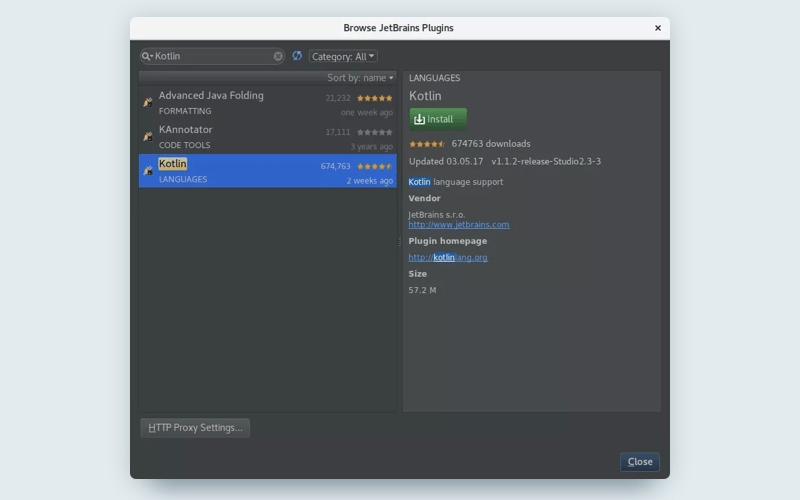


However, there is a better way of managing intensive operations in Kotlin, known as coroutines. Coroutines are stackless, which means they demand lower memory usage as compared to threads.Ĭoroutines are able to perform long-running and intensive tasks by suspending execution without blocking the thread and then resuming the execution at some later time. Kotlin also allows the creation of additional threads. However, managing multiple threads leads to an increase in complexity as well as errors in the code. The traditional solution for the problem in Java is to create a background thread for the long-running or intensive work.
Android studio languages android#
As Android is single-threaded by default, an app’s UI gets completely frozen as soon as the main thread is blocked. The calling thread is blocked until the whole operation completes. CoroutinesĬPU-intensive work and network I/O are long-running operations. This allows for working with that View as if it was part of the Activity. Kotlin Android Extensions permit importing a reference to a View into the Activity file.

Android studio languages code#
A Kotlin class necessitates less code than a Java class does for the same operation.įor example, a particular segment where Kotlin can significantly reduce the total amount of boilerplate code is findViewByIds. Code ConcisenessĬomparing a Java class with an equivalent Kotlin class demonstrates the conciseness of Kotlin code. However, if the developer believes that checked exceptions encourage error recovery and the creation of robust code, they would prefer Java. If a developer working in Java finds it infuriating to use try/catch blocks in the code then they may find Kotlin much better. Therefore, there is no need to catch or declare any exceptions. One major difference between Java and Kotlin is that the latter has no provision for checked exceptions. Kotlin is a cross-platform, statically typed, general-purpose language developed by JetBrains. Although, can have multiple constructors (constructor overloading) Can have one or more secondary constructors Ternary Operator Available Unavailable Wildcard Types Available Unavailable, has declaration-site variance and type projects as an alternative What is Kotlin? Lambdas expressions are introduced in the Java 8 Prebuilt features Implicit Widening Conversions Unavailable Available Inline Functions Unavailable Available Native Support for Delegation Unavailable Available Non-private Fields Available Unavailable NullPointerExceptions Available Unavailable Primitive Types Variables of a primitive type aren’t objects Variables of a primitive type are objects Smart Casts Unavailable Available Static Members Available Unavailable Support for Constructors No secondary constructors. Kotlin vs Java: Head to Head Comparison Feature Java Kotlin Check Exceptions Available Unavailable Code Conciseness Not very concise Better than Java Coroutines Unavailable Available Data classes Required to write a lot of boilerplate code Requires adding only the data keyword in the class definition Extension Functions Unavailable Available Higher-Order Functions and Lambdas Higher-order functions are implemented using Callables. After that, you‘ll find a more detailed explanation of the differences. If you’re eager for a quick summary of the differences, we’ve posted a table below. This Kotlin vs Java head-to-head comparison breaks down the similarities and differences between the two. If you’re looking to develop Android apps, and get a position in this vast field, then it’s vital that you know the differences between Kotlin and Java. Especially in the world of Android development, you’ll see that the two completely dominate. Kotlin and Java are both two extremely popular programming languages.


 0 kommentar(er)
0 kommentar(er)
